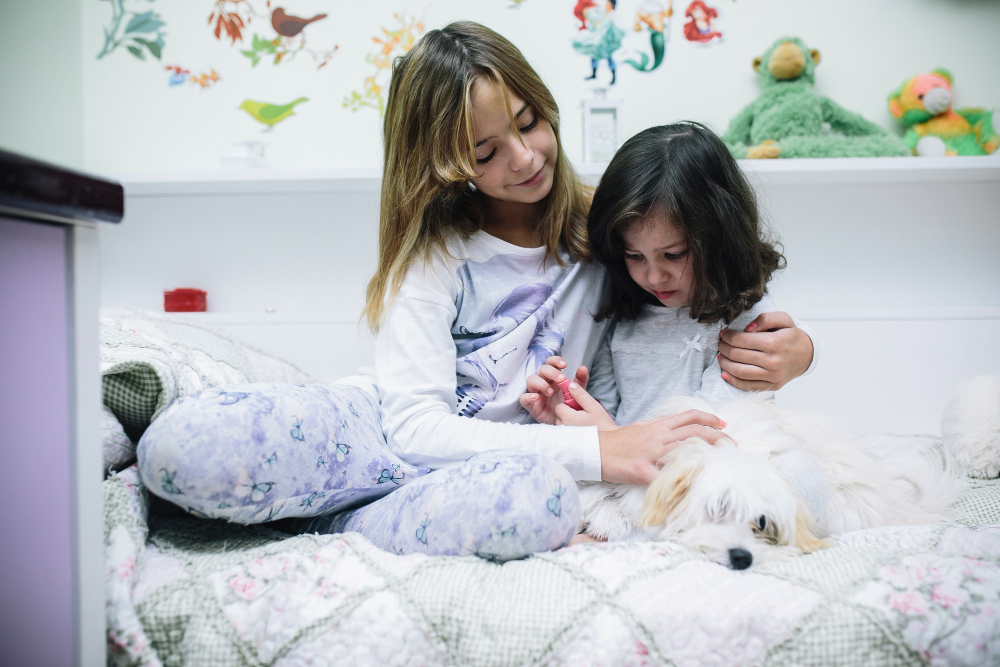How to Talk to Children About Pet Euthanasia

How to Talk to Children About Pet Euthanasia

Losing a beloved pet is one of the hardest experiences a family can go through. For many, pets are not just animals; they are family members, playmates, and loyal companions. The decision to euthanize a pet is heartbreaking, but when children are involved, it comes with an added layer of complexity.
For families in Jupiter, FL, opting for in home euthanasia offers a more peaceful and supportive environment to say goodbye. But how do you explain such a significant event to your children in a way that they can understand? This blog will guide parents on how to approach the topic of euthanasia with their children compassionately and thoughtfully.
Why Communication Matters When Euthanizing a Pet
Children form deep emotional bonds with pets. Whether it’s the family dog who waits by the front door for them to come home, or the cat who curls up on their bed during storytime, pets often play a central role in their lives. When faced with the prospect of saying goodbye, open and honest communication is critical to helping children process their grief and understand what’s happening.
Failing to address the situation can leave children confused, scared, or resentful. Explaining why euthanasia is necessary offers them clarity and closure, while also teaching them valuable lessons about love, compassion, and the natural cycle of life.
Age-Appropriate Ways to Talk About Pet Euthanasia
Children of different ages process and understand death differently, so tailoring your explanation to their level of development is essential. Here’s how you can approach the conversation based on their age group.
Preschoolers (Ages 3-5)
Young children at this age have limited understanding of abstract concepts like death. Use simple, clear, and direct language. For example, you can say, “Our dog, Max, is very sick, and the doctor can’t help him get better. We’re going to help him go to sleep so he doesn’t feel pain anymore.”
Avoid using euphemisms like “putting Max to sleep” without clarification, as young children may interpret this literally and develop fears around sleep. Answer their questions patiently, even if they seem repetitive.
Elementary School Children (Ages 6-12)
Children in this age range are better able to understand the concept of death, although they may still need reassurance. Be honest but gentle. You can explain, “Max has been in a lot of pain because of his illness. Euthanasia is a way for us to help him peacefully pass away without suffering anymore.”
Be prepared for a range of emotions, from sadness to frustration or even guilt. Encourage them to express their feelings and remind them that it’s okay to feel upset.
Teenagers
Teenagers are usually able to grasp the more complex realities of life and death. This makes it easier to have a more open dialogue. Share the reasons behind your decision, the vet’s advice, and how euthanasia provides a dignified way to ease suffering.
Invite them to participate in discussions with the veterinarian if you feel they’re emotionally ready. Giving teens some level of involvement in the decision or process can help them feel empowered, even in a difficult moment.
Preparing for the Day
If you’ve decided on in home euthanasia, the familiarity of your home can make the process less intimidating for children. Here are steps to help your kids prepare emotionally and physically for the day.
1. Explain What Will Happen
Describe the process in age-appropriate terms. For instance, you might explain to younger kids, “The vet will come to our home, and Max will get a special medicine that helps him fall asleep really quickly. He won’t wake up, but he won’t feel any pain.”
For older children and teens, you can provide more details, such as how the vet administers the medication and the steps that follow.
2. Give Them a Choice to Be Present
Not all children will want to say goodbye in person, and that’s okay. Forcing them to participate could lead to unnecessary stress. Respect their comfort levels and offer alternatives, such as writing a goodbye letter to their pet or drawing a picture they can share with the vet beforehand.
3. Create a Calming Atmosphere
Set up a cozy environment for the pet in a quiet room. Encourage children to bring their pet’s favorite blanket, toy, or treats to make them feel loved and secure.
4. Allow Time for Goodbyes
Provide ample time for each family member to say goodbye in their own way. This could include sitting quietly with the pet, sharing happy stories, or even holding a short family ceremony, like lighting a candle or saying a prayer for the pet.
Supporting Your Children Through Their Grief
Grieving is a natural part of losing a pet, and children will experience it in their own unique way. Here are some strategies to help them cope.
Encourage Emotional Expression
Give your children room to cry, talk, or express their feelings through art, writing, or play. Validate their emotions by saying things like, “It’s okay to feel sad or angry. That just means you loved Max very much.”
Share Your Own Feelings
Be a role model by being open about your own grief. Saying, “I’m really going to miss Max, too,” shows them that it’s normal to feel a range of emotions.
Keep the Memory Alive
Help your kids remember their pet by creating a keepsake, like a scrapbook, photo album, or memory box. Planting a tree or making a donation to an animal shelter in your pet’s honor can also create a positive way to commemorate their life.
Maintain Routine
Pets often play a big role in daily family routines, so their absence may feel particularly noticeable. Keep other routines in place to provide children with a sense of stability and structure as they adjust.
Why In Home Euthanasia Is a Comforting Choice
Choosing in home euthanasia means providing a familiar and stress-free environment for your pet in their final moments. For families in Jupiter, FL, services like Rover Veterinary Care ensure that this process is conducted with the utmost care, professionalism, and compassion.
Being at home gives everyone the opportunity to say goodbye privately, surrounded by comforting memories of the pet’s life. It allows children to feel involved in the process while reducing the anxiety associated with clinical settings.
Helping Your Family Heal
Saying goodbye to a pet is an emotional and difficult process, especially when children are part of the equation. Honest communication, thoughtful preparation, and ongoing support can help your family cope and heal together.
If you’re in Jupiter, FL, and are considering in home euthanasia for your pet, Rover Veterinary Care is here to help you through this tough time. Our compassionate professionals are dedicated to making this process as peaceful as possible for your family and your beloved pet.
Contact us today for more information or to schedule a consultation.
